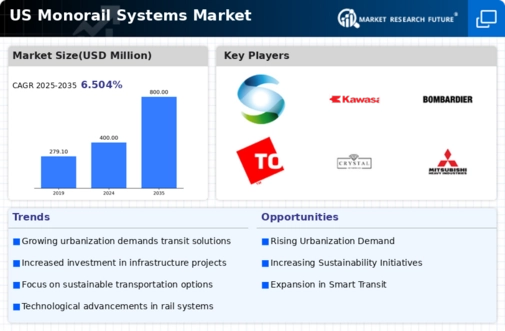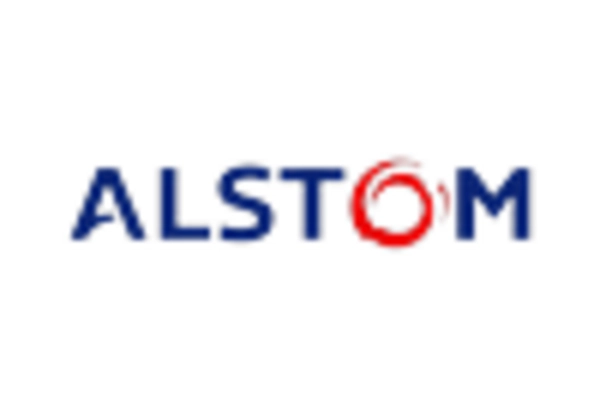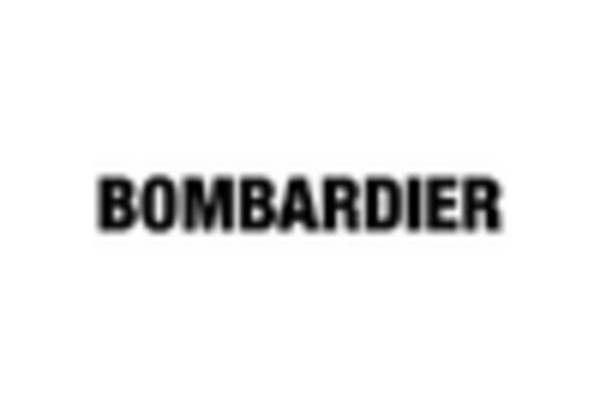Growing Urban Congestion
The increasing urban congestion in major cities across the US is a primary driver for the monorail systems market. As populations swell, traditional transportation methods struggle to accommodate the rising demand. Monorail systems offer a solution by providing efficient, elevated transit options that can bypass ground-level traffic. In 2025, urban areas are projected to experience a 15% increase in population density, further exacerbating congestion issues. This trend compels city planners to consider monorail systems as a viable alternative to alleviate traffic woes. The monorail systems market is thus positioned to benefit from this growing need for innovative transportation solutions that can operate independently of existing road networks.
Government Investment in Infrastructure
Government investment in infrastructure is a significant catalyst for the monorail systems market. Federal and state initiatives aimed at modernizing transportation networks have led to increased funding for public transit projects. In 2025, the US government allocated approximately $30 billion for urban transit improvements, with a portion earmarked specifically for monorail systems. This financial support not only enhances the feasibility of new projects but also encourages private sector participation. The monorail systems market stands to gain from this influx of capital, as it enables the development of new routes and the expansion of existing systems, ultimately improving public transportation accessibility.
Environmental Regulations and Compliance
The tightening of environmental regulations in the US is driving the monorail systems market. As cities strive to reduce their carbon footprints, monorail systems present an eco-friendly alternative to traditional transit options. These systems typically produce lower emissions and require less land compared to road-based transport. In 2025, it is estimated that cities with monorail systems could reduce transportation-related emissions by up to 25%. This regulatory landscape encourages municipalities to invest in monorail systems as part of their sustainability goals. Consequently, the monorail systems market is likely to see increased demand as cities seek compliant solutions to meet environmental standards.
Public Demand for Efficient Transit Options
Public demand for efficient and reliable transit options is a crucial driver for the monorail systems market. As commuters seek alternatives to congested roadways and unreliable bus services, monorail systems offer a fast and dependable mode of transportation. Surveys indicate that 70% of urban residents express a preference for rail-based transit solutions. This growing demand is prompting city officials to explore monorail systems as a means to enhance public transit offerings. The monorail systems market is well-positioned to respond to this demand, as it provides a solution that aligns with the needs of modern urban commuters.
Technological Integration and Smart Transit Solutions
The integration of advanced technologies into public transportation is reshaping the monorail systems market. Innovations such as real-time tracking, automated operations, and smart ticketing systems enhance the efficiency and user experience of monorail services. In 2025, it is anticipated that 40% of new monorail projects will incorporate smart technologies, making them more attractive to commuters. This trend aligns with the broader push for smart city initiatives, where seamless connectivity and data-driven decision-making are paramount. The monorail systems market is thus likely to thrive as cities adopt these technologies to improve transit efficiency and rider satisfaction.

















Leave a Comment